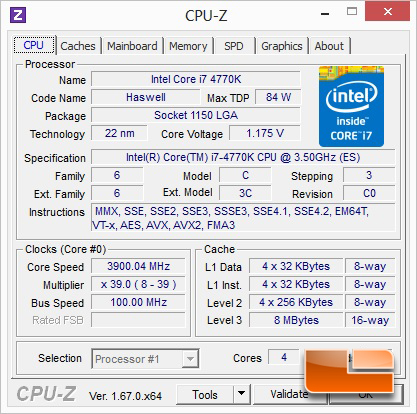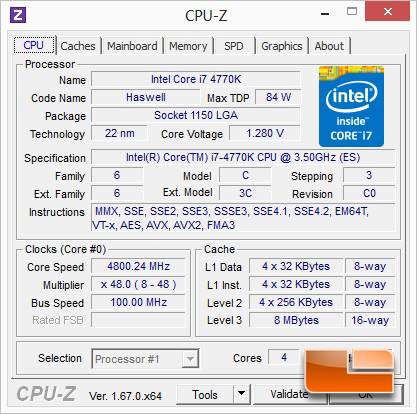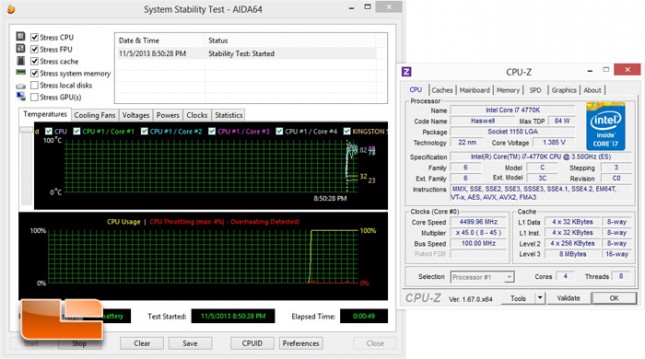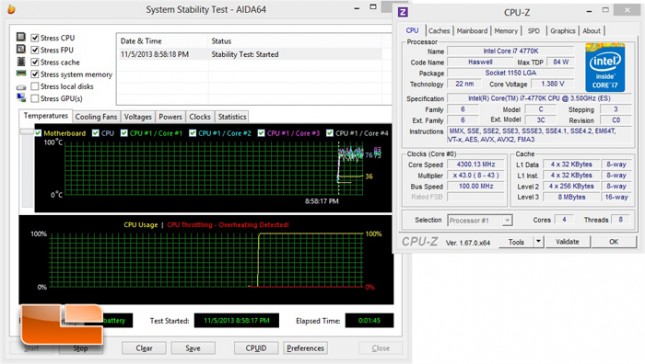GIGABYTE G1.Killer Sniper 5 Intel Z87 Motherboard Review
Overclocking
Overclocking greatly varies due to what hardware is being used and who is doing the overclocking. Always remember that no two pieces of hardware will perform the same, so our results will differ from what you might be able to get.

The Intel Core i7 4770K runs at a non-turbo speed of 3.5GHz and turbo will ramp the processor up to as high as 3.9GHz under a lightly threaded load as we can see above. Since we are using a K series processor which has an unlocked multiplier we will be able to increase the default x35 multiplier to achieve our overclock today. This is the easiest way to overclock K series processors and should provide us with some great speeds.

We were easily able to take our Intel Core i7-4770K ‘Haswell’ Processor to 4.8GHz with the GIGABYTE G1.Sniper 5. The only settings we had to tweak within the BIOS was the CPU multiplier and the CPU VCore. Our particular processor requires very little voltage increases and is happy at 4.8GHz with a vCore in the realm of 1.29 Volts.
As always we tried to break past 4.8GHz, but we were unsuccessful. If we added much more voltage we would run into a heat issue, and without the voltage we just weren’t stable at all.
The GIGABYTE G1.Sniper 5 Intel Z87 motherboard has the ability to create a performance upgrade from within the BIOS. You can increase the performance by 20%, 40%, 60%, 80%, or 100%. We wanted to give this a go, so we set the performance upgrade to 60% and rebooted the system.

Once we successfully booted the G1.Sniper 5 into Windows we fired up CPUz and AIDA64 system stability test to see exactly where we were at. The Intel Core i7 4770K was set to 4.5GHz and the vCore was set to 1.385. The high vCore caused our processor to throttle back the performace due to the heat generated. Not all processors run at such a low vCore as our sample so the vCore may be needed by yours, my advice is to keep an eye on the CPU temperatures whenever you’re overclocking.

I tried to back the performance upgrade to 20%, but the vCore remained virtually unchanged. Since the vCore was still sitting at 1.38 Volts, our processor was still hitting the thermal limits and beginning to throttle down.
